140+ Defects in One Property: The Ultimate New Build Checklist You Need Before Handover
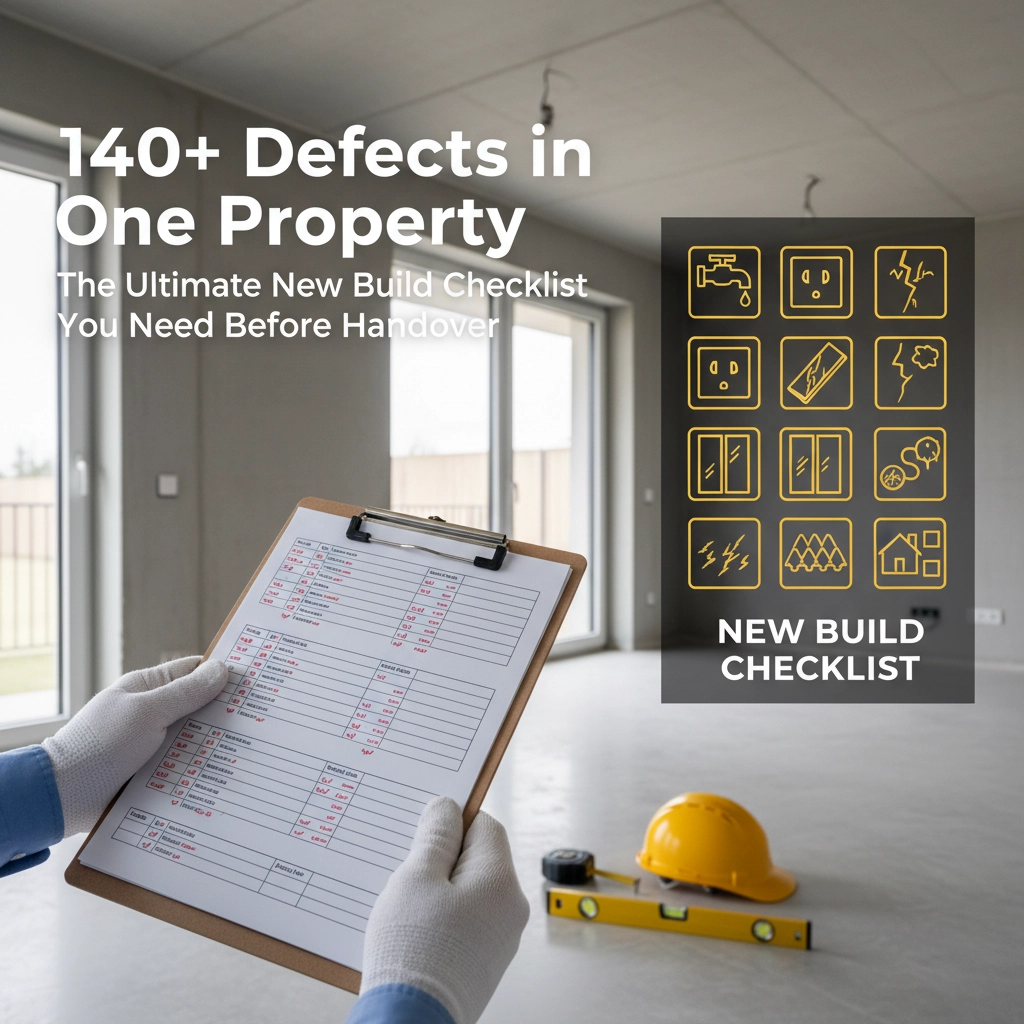
You’ve waited months for your dream new build home, and handover day is finally here. But before you pop the champagne, there’s one crucial step that could save you thousands: a thorough snagging inspection. The shocking truth? Even the most reputable developers can hand over properties with 100+ defects that need addressing.
Don’t let the pristine show home facade fool you. Behind those perfect walls and gleaming fixtures, there’s often a laundry list of issues waiting to be discovered. The good news? Once you know what to look for, you can spot these problems before they become your expensive headaches.
Why This Checklist Matters More Than You Think
Here’s the reality: once you accept the keys, fixing defects becomes your responsibility and your expense. That £500 you might save by skipping a professional new home snagging survey could easily turn into £5,000+ in repair bills down the line.
We’ve compiled the most comprehensive defect checklist based on real snagging surveys from properties across the UK. This isn’t theoretical – these are actual defects found in brand-new homes that buyers almost missed.
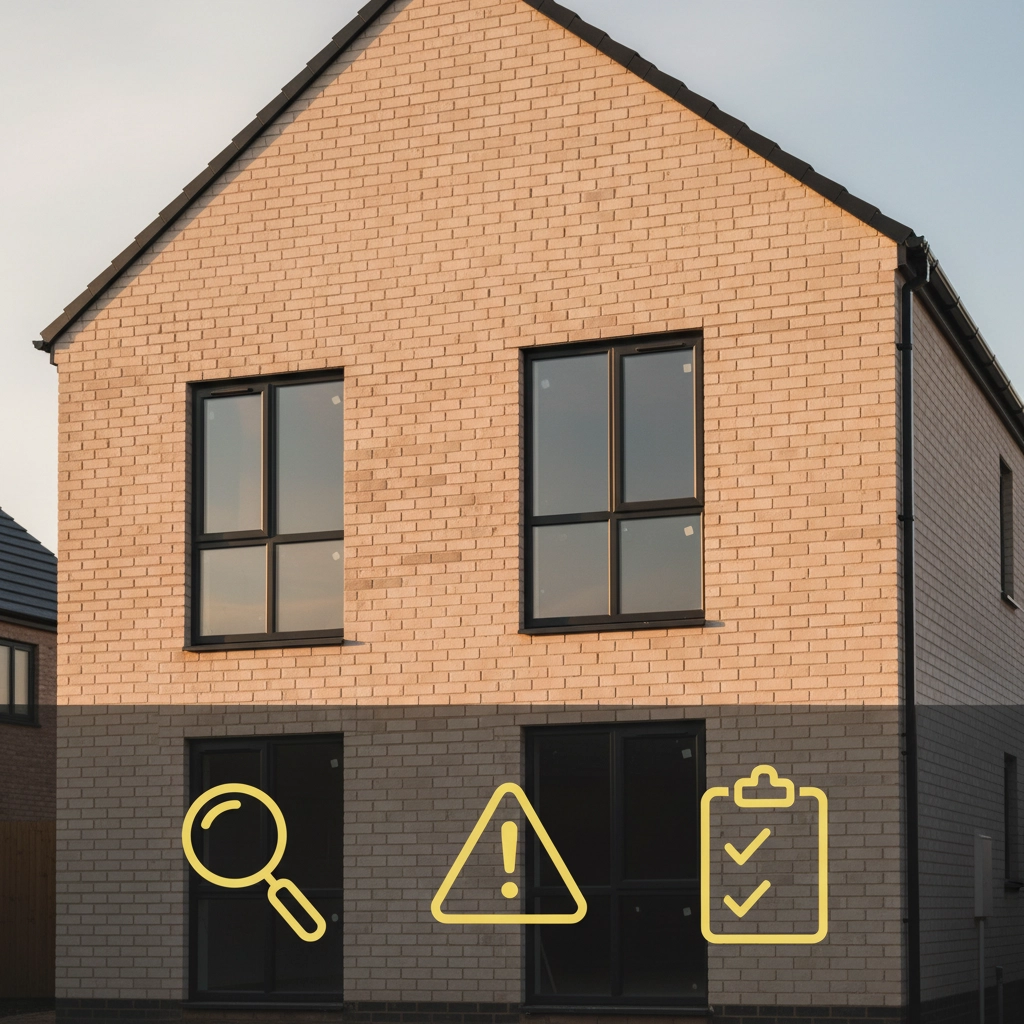
Exterior Defects: Your Home’s First Line of Defence
Building Structure & Walls
- Cracks in external walls (any crack thicker than a 10p coin needs immediate attention)
- Uneven or damaged render/cladding
- Missing or damaged pointing between bricks
- Paint runs, drips, or uneven coverage
- Scratches, dents, or chips in external surfaces
- Gaps around window and door frames
- Poorly fitted or damaged external insulation
- Water staining or discolouration
- Bulging or bowing walls
- Incomplete or damaged weatherproofing
Roofing & Guttering
- Missing, cracked, or loose roof tiles/slates
- Inadequate roof ventilation
- Blocked or damaged gutters and downpipes
- Incorrect fall on guttering (should slope towards downpipes)
- Missing gutter brackets or poor fixings
- Damaged or missing fascia boards
- Loose or damaged roof flashings
- Inadequate pointing around chimneys
- Poor sealing around roof penetrations (vents, aerials)
Windows & External Doors
- Scratched or damaged window frames
- Paint splashes on glass or frames
- Windows that don’t open/close properly
- Missing or broken window restrictors
- Gaps in sealing around frames
- Damaged or missing weather strips
- Faulty window locks or missing keys
- Non-compliant safety glass in required locations
- Poorly fitted external doors
- Damaged door furniture or locks
Interior Defects: Where Most Problems Hide
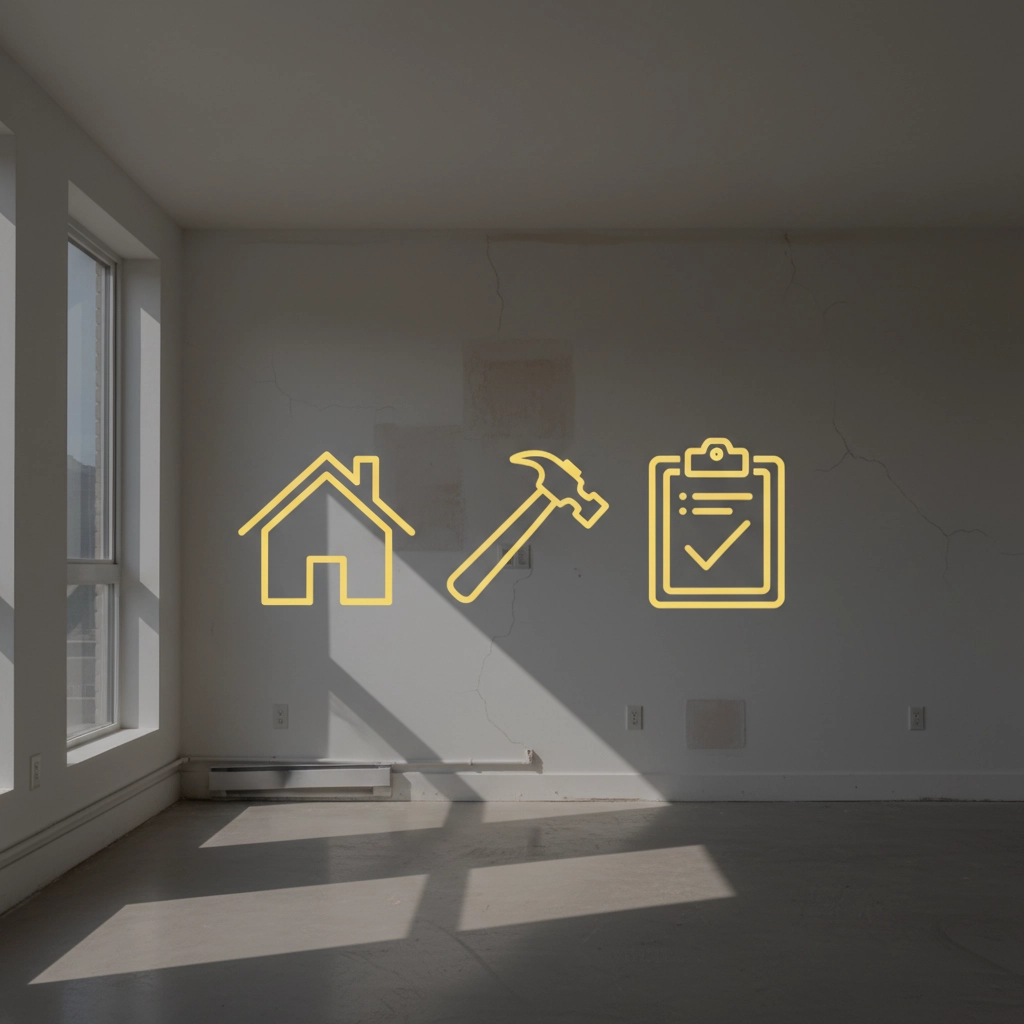
Walls & Ceilings
- Uneven plaster finish or visible lumps and bumps
- Cracks in walls or ceilings
- Screw pops showing through paint
- Poor paint coverage or visible brush marks
- Water stains or discolouration
- Gaps between skirting boards and walls
- Wonky or poorly fitted architraves
- Uneven or damaged coving
- Poor finishing around electrical outlets and switches
- Hollow-sounding walls indicating poor fixing
Flooring Throughout
- Uneven or squeaky floorboards
- Gaps between floorboards or at edges
- Damaged or scratched hard flooring
- Poor carpet fitting with visible joins or wrinkles
- Cracked or uneven screed
- Cold spots indicating poor insulation
- Loose or hollow-sounding tiles
- Poor transitions between different floor types
- Inadequate expansion gaps around perimeter
Internal Doors & Ironmongery
- Doors that don’t close properly or catch on frames
- Visible gaps around door frames
- Damaged or poorly fitted door handles and locks
- Doors that swing open or closed on their own
- Scratched or damaged door surfaces
- Poorly fitted hinges causing doors to sag
- Missing or incorrect door stops
- Fire doors without proper certification labels
Kitchen Defects: The Heart of Your Home
Units & Worktops
- Poorly fitted kitchen units with visible gaps
- Damaged worktop edges or surfaces
- Uneven or poorly supported worktops
- Faulty soft-close mechanisms on doors and drawers
- Scratched or damaged cabinet doors
- Poor alignment of cabinet doors and drawer fronts
- Missing or loose cabinet handles
- Inadequate support for wall-mounted units
Appliances & Plumbing
- Faulty built-in appliances or missing accessories
- Poor plumbing connections causing leaks
- Inadequate water pressure at taps
- Taps that don’t shut off properly
- Missing or faulty appliance isolation switches
- Poorly positioned electrical outlets for appliances
- Inadequate ventilation for appliances
Bathroom & WC Defects: Moisture Management Critical
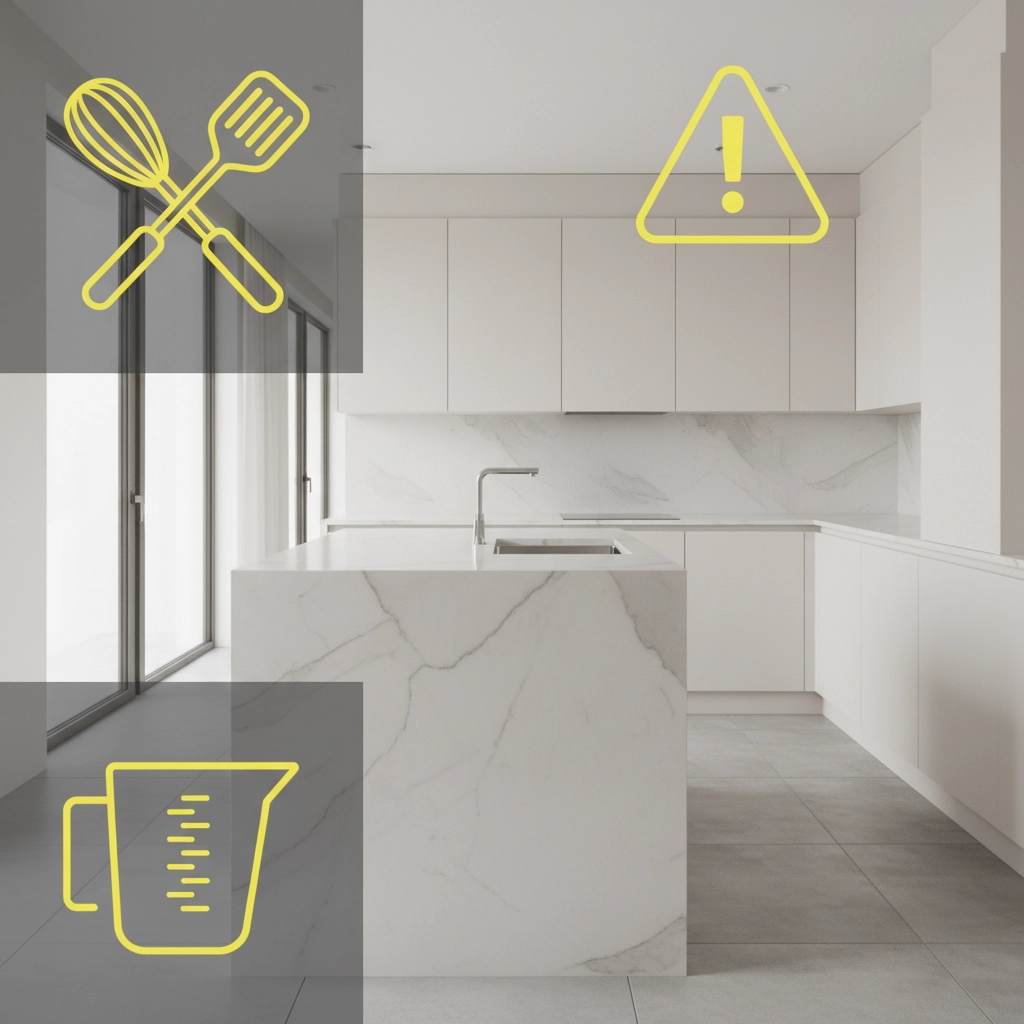
Sanitary Ware
- Poorly fitted or unstable toilet seats
- Toilet that rocks or isn’t properly secured
- Weak water flow or toilet that doesn’t flush properly
- Leaking or poorly fitted taps and mixers
- Bath or shower that doesn’t drain properly
- Cracked or chipped sanitaryware
- Poor sealing around baths and showers
- Inadequate water pressure in showers
Tiling & Waterproofing
- Uneven or poorly fitted tiles
- Missing or damaged grout
- Poor waterproofing behind shower areas
- Inadequate sealing around wet areas
- Cracked or damaged tiles
- Poor tile cutting around fixtures
- Inadequate falls to drains in wet rooms
Ventilation
- Faulty or inadequately sized extractor fans
- Missing or poorly positioned fan isolator switches
- Inadequate ventilation causing condensation
- Poorly fitted vent covers or grilles
Electrical Defects: Safety First
Outlets & Switches
- Electrical outlets not working or loose
- Uneven or poorly fitted switch plates and outlets
- Missing outlet covers or switch plates
- Incorrect height positioning of switches and outlets
- Poor cable management with visible wiring
- Inadequate earthing or RCD protection
- Missing USB outlets where specified
Consumer Unit & Certification
- Unlabelled circuit breakers in consumer unit
- Missing electrical certification
- Inadequate main earthing connections
- Poor cable routing in consumer unit
- Missing RCD protection for required circuits
Heating & Ventilation Defects
Central Heating
- Radiators not heating properly or cold spots
- Poorly fitted or loose radiator valves
- Visible pipe runs that should be hidden
- Inadequate heating controls or faulty thermostats
- Noisy heating system or boiler
- Poor lagging on hot water pipes
- Incorrectly positioned room thermostats
Ventilation Systems
- Inadequate ventilation in required areas
- Noisy ventilation fans
- Poor ducting installation
- Missing or damaged air bricks
- Inadequate trickle vents in windows
Safety & Security Defects
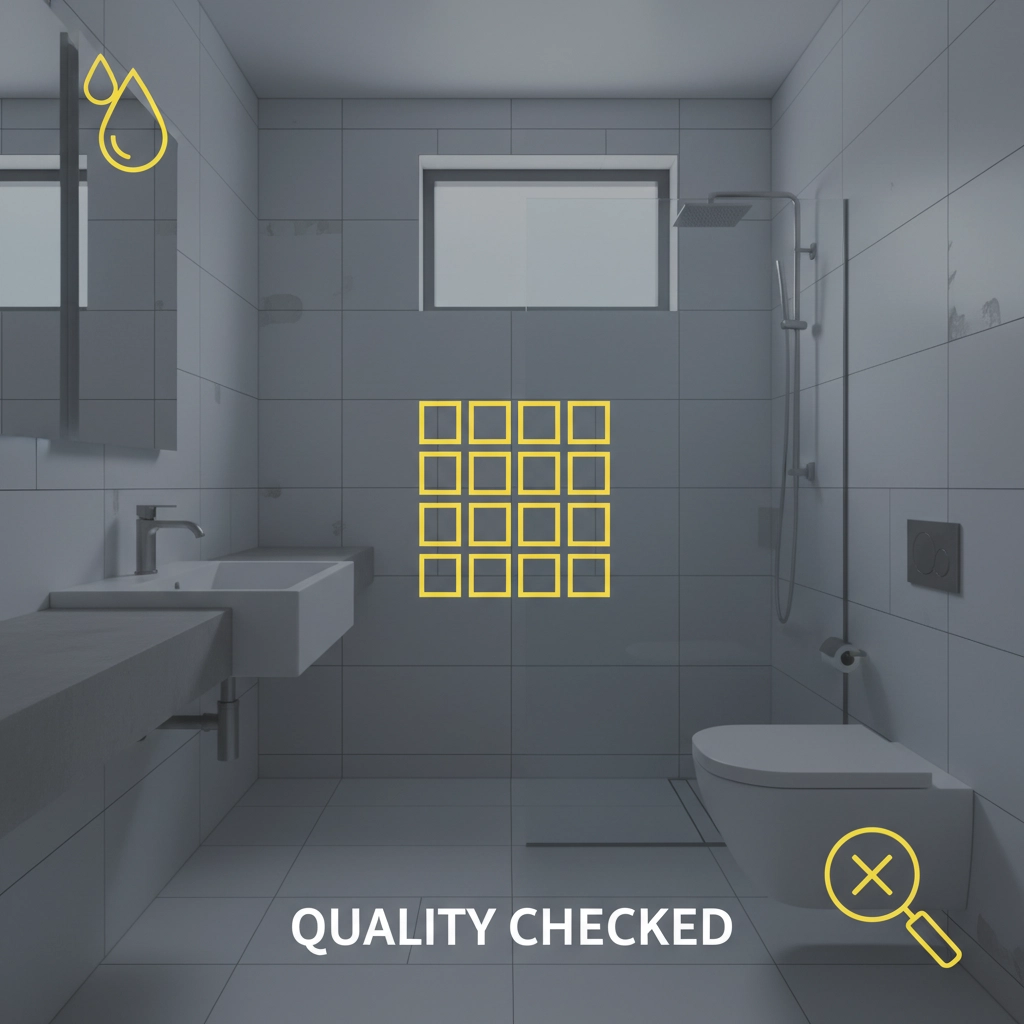
Fire Safety
- Missing or non-functional smoke alarms
- Inadequate fire door specifications
- Missing fire-resistant materials where required
- Blocked escape routes or inadequate emergency egress
- Non-compliant safety glass in critical areas
Security Features
- Faulty door and window locks
- Missing window restrictors on upper floors
- Inadequate security lighting
- Poorly fitted security systems or alarms
Documentation & Completion Defects
Missing Paperwork
- Incomplete building control certificates
- Missing appliance warranties and manuals
- Inadequate as-built drawings
- Missing compliance certificates for heating/electrical
- No energy performance certificate
The Hidden Costs of Missing These Defects
Let’s be brutally honest about what happens when you miss these defects:
- Structural issues discovered later: £5,000-£15,000+
- Electrical problems requiring rewiring: £3,000-£8,000
- Plumbing leaks causing water damage: £2,000-£10,000
- Heating system failures: £1,500-£5,000
- Poor insulation increasing energy bills: £300-£500 annually
The average cost of fixing defects after handover is 8x higher than having them resolved during the snagging period.
Why Professional Snagging Surveys Are Worth Every Penny
While this checklist is comprehensive, spotting all these defects requires trained eyes and proper equipment. Professional independent snagging companies bring:
- Thermal imaging cameras to spot insulation defects
- Moisture meters to detect hidden dampness
- Spirit levels to check true walls and floors
- Electrical testing equipment for safety compliance
- Years of experience knowing where to look
At Snagit Ltd, our inspectors regularly find 100+ defects that buyers would have missed. Our detailed reports give you the ammunition needed to get everything fixed before you move in.
Your Next Steps: Don’t Leave It to Chance
This checklist represents just the tip of the iceberg – we’ve identified over 300 potential defect types in our comprehensive database. The question isn’t whether your new build has defects (it almost certainly does), but whether you’ll find them in time.
Ready to protect your investment? Contact Snagit Ltd for a professional snagging survey that could save you thousands. Our team of qualified inspectors will systematically check every inch of your property, providing you with a detailed report that ensures your developer addresses every issue before handover.
Don’t let that dream home become a nightmare of unexpected repair bills. Book your new home inspection today and move in with complete confidence.
Remember: spending £300-£500 on a professional snagging survey now could save you £5,000+ in repairs later. It’s not just smart money – it’s essential protection for what’s likely your biggest investment.
